
August 2002
The Attack of the Clones craze was still latent on the environment, I was gifted a burned copy of Jedi Knight II: Jedi Outcast. I loaded the disc into my brand-new desktop computer (1.4 GHz Pentium IV, 256mb of RAM, GeForce 4 MX440, 20GB HDD, and good old Windows ME).
I installed the game, and had my fair share of fun in the Single Player campaign, but I never got too involved with the game back then; Other games had caught my attention the most, and as a result, I never finished the single player mode on that occasion.
December 02, 2002
The first day of Venezuelan General Strike of 2002-2003, this oil strike—as it was called—paralyzed the nation as a whole for approximately two months. One of the consequences of this oil strike was the implementation of a currency control exchange, one of the major culprits of our current economic collapse.
Due to the strike, all schools remained closed, our 2002 class schedule ended prematurely (~13 days before the usual Christmas/New Year’s break period). With everything and everywhere closed, there was only one thing that my fourteen-year-old self could do: Play pirated Video Games copies on my modded Xbox console.
December 04, 2002
Being the reckless child that I was (and probably still am), I attempted to flash my console’s Evolution X Dashboard to a newer version, power was interrupted during the process and I ended up bricking the console. The Xbox I had worked so hard to save money for back in April 2002 had become nothing more than an oversize paperweight.
That was the day when I truly understood the meaning of the phrase “If it ain’t broke, don’t fix it.”
With an unbootable console and no way to repair it at the time, in addition to not being able to go anywhere as everything was closed due to the strike, I had no choice but to start using my computer for entertainment. I spent the majority of that “extended vacation period” trying different emulators, a few PC video games that I had available, and messing around with RPG Maker.
March 2003
The country was returning to a sense of normalcy, having hit a Roadblock on RPG Maker and getting bored of Empire Earth, I had decided to try other video games, eventually giving Jedi Outcast’s multiplayer a shot.
Things were simpler back then, the game had no DRM, no cd-key check to verify said copy’s legitimacy, and I was of course completely oblivious to these concepts. There was no distinction or discernible difference between my burned copy and a legitimate disc.
I couldn’t have possibly predicted that by choosing to play this game I was embarking myself on a still ongoing online journey. Jedi Outcast was the rock upon a myriad of events unfolded, my very first foray into the world of online gaming; it was a place where long lasting friendships were formed, where many laughs were had, and where many dramas were suffered. It ultimately became an important and treasured part of the best years of my adolescence.
Everything piece of custom content that I had made for that game is now lost, every screenshot of those days is now gone, only the memories of those better times remain. This is my recollection of those eighteen months, my sendoff letter to this diamond from a now lost era in Video Games.
Here’s to absent friends…

Released in 2002 and developed by Raven Software, Jedi Outcast was the sequel to 1997’s Star Wars Dark Forces: Jedi Knight. Players once again stepped into Kyle Katarn’s shoes, wielding both firearms and The Force as you shot and slashed your way through the Empire Remnants as well as the Dark Jedi, Desann, and his army of Reborn.
Powered by the ID tech 3 game engine, Jedi Outcast was a vast improvement over its predecessor. While it lacked the cheesy but great Live Action cut scenes of the first Jedi Knight, its gameplay was miles ahead of its predecessor, the game featured classic weapons from both Star Wars’ Original Trilogy and the Expanded Universe (now re-branded as ‘Legends’) as well as featuring well-known force powers such as Grip, Push, Pull, and Lightning.
Fifteen years since its release and the game has passed the test of age; it is a testament of a now lost era of video games. It offered a fresh and unique gameplay experience, especially in its multiplayer component during a time when the Battlefield franchise was taking its first steps, before the release of the first Call of Duty, when Counter-Strike reigned supreme, and when the MOBA genre was still a relatively infant niche.
The plot was simple: “stop the bad guy’s plan before it’s too late” and yet, its straightforward execution was superb. The Jedi Knight series always made great use of the Star Wars Universe, well-known locales like Nar-Shaddaa and Yavin IV were prominent parts of the plot. Luke Skywalker and Lando Calrissian offered their fair share of assistance to Kyle’s journey; these emblematic characters were used by the plot with respect, which is more than can be said about the Disney Sequel Trilogy.
A game like Jedi Outcast cannot possibly exist in today’s “Games as a Service” plagued video game industry. JK2 is a perfect example of what games used to be when the video games industry was more innocent, before DLC, before micro transactions, before loot boxes and pay-to-win monetization schemes.
The multiplayer had no unlocks to grind, nothing was locked behind paywalls; everyone had the same options available, everyone played under the same even field, and everyone could expand the game’s content thanks to the SDK and tools that were available at your disposal.
During its prime era, Jedi Outcast had hundreds of dedicated servers, all ran by the community and by the numerous clans that existed, unlike the matchmaking and peer-to-peer multiplayer systems that has become the de-facto standard in recent times.
Some game servers (mostly non-clan ones) offered the standard experience. Jedi Outcast’s gameplay is still unique and fresh, even after fifteen years, it blends lightsaber combat with weapons and the force, with some support items scattered on the maps; the result can often be chaotic, but great and immensely fun. Nothing beats force gripping and then pushing an enemy out of the map—or pulling them and taking your assailant with you as a last vengeful act of defiance.
Being powered by the same engine that ran the legendary Quake 3 Arena made Jedi Outcast’s dedicated servers extremely easy to configure on both Windows and Linux platforms. While the default server configuration files were quite barebones, ID’s engine allowed for a myriad of customization.
Servers offered different game types (Free for All being by far the most popular mode), and also offered different game type rule-sets; while some of them offered default values on their configuration. Raising the force resource regeneration rate was a common choice that gave way to a faster paced match. Some servers disabled all guns to provide a pure lightsaber Deathmatch environment, others reduced the amount of force powers at your disposal, no two servers were equal.
The lightsaber combat is still second to none, it was a perfect example of the “easy to learn, hard to master” paradigm. Lightsaber duels required patience, mastery of the three stances (blue, yellow, and red) as well as a keen eye, learning to anticipate your opponent’s moves was crucial to victory—making them dance to your tune even more so.
The game allowed you to build your own Force Power specialization. All players had a set amount of force points to spend—as dictated by the server, with some caps hardcoded in the base game. You could spend these points into a neutral force power tree (Push, Pull, Speed, Jump, Sense, Mind Trick) a Lightsaber tree (Lightsaber Attack, Lightsaber Defense, and Lightsaber throw), as well as Light Side (Absorb, Protect, Heal, Team Heal) and Dark Side abilities (Grip, Drain, Lighting, Dark Rage).
The Dark Side tree was more offensive oriented and in all honesty, more fun, while the Light Side was more defensive. In the right hands, using the Light Side tree made you an unstoppable behemoth, as Force Absorb countered every Dark Side ability while restoring your Force power resources, while Protect gave you an astounding amount of damage mitigation, juggling these two auras and weaving heals in between when needed made you a God among men.
Saber Defend was a passive but important ability, it allowed you to neutralize most (but not all) enemy weapons as long as you faced your opponent with it, spending points in Saber Attack gave you access to the Yellow and Red stances; Throw was more of a side ability, as it was grossly outclassed by every other weapon in the game, I often avoided putting points into this ability.
My Regular to-go Light Side build involved maxing Jump, Push, Pull, Absorb, Heal, Protect, Saber Attack, and Saber Defense, using leftover points in Speed. Force Seeing was essentially a wallhack ability (think Widowmaker’s ultimate) and allowed you to “Matrix dodge” sniper shots; Mind Trick was perhaps, the worst ability, it acted as pseudo-stealth.
There were so many combinations that you could try out, and all of them viable. “Pull-whoring” was a fantastic way to annoy people, as Force Pull had a chance to disarm an opponent, giving you an opportunity to steal their weapons.

The JK2 community is what set the game apart from everything else. Long gone is that golden era of Jedi Outcast that flourished with a thriving player base, it is now reduced to a mere shadow of its former glory. Most servers (most notably, clan ones) became hubs to close-knit communities of gamers, each with their own twists and particularities; camaraderie and friendship were things that you could easily expect in any of those servers. Small glimmers of this behavior can still be found to a lesser extent even after all these years, but it is sadly becoming a rarer sight as time passes.
In a time before Social Media, before Discord and Skype, message boards and AOL Instant Messenger were the topmost means of communication used by the JK2 community, it’s how you stayed in touch with your friends outside the game, how clan matches were organized, how things flowed.
The Star Wars concepts of Jedi Orders were largely influential in the way clans were structured and operated, ranks were often in tune with those found in the Star Wars Lore (Padawan or Apprentice, Jedi Knight, Jedi Master, and so on). Even though the experience varied per clan, being recruited into one often involved becoming someone’s “apprentice”, after a set period of time and after a training process, one would undergo a series of “trials” with the purpose of proving one’s worth.
This was largely celebrated with pride by some, and heavily disliked by others who wished a more “pure” online shooting/slashing experience, but for all the different particularities and inner structures that each clan or community possessed, at the core of everything stood the Saber Code.
The Saber Code: The tenets of a community
The “Saber Code” (also known as the Saberist/Honor code—contemptuously referred to as h0n0rz) was originally conceived by the Jedi Knight I community in 1997-1998, it spawned out of necessity, largely in part due to the technical limitations of the previous game.
Connecting to JK1 multiplayer servers had to be done manually via TCP/IP, there was no “Master Server” to choose where to play at, this meant that servers had even closer communities as people would, for the most part, share their server’s IP address with their closest friends only. Therefore, servers were mostly populated by group of friends that banded together for some fancy Jedi action.
In essence, the code originally was employed as a means to slow down on the frantic action so as to be able to organize Lightsaber duels between players; two players fought to the death while the rest of the players watched the combat, waiting for their turn to demonstrate their prowess. The code was created because JK1 lacked a proper duel mode to support this practice.
While Jedi Outcast does in fact have a duel game type, it often felt constrained and very barebones; the code was carried over by clans for their Free-for-All servers, and then it was greatly expanded upon, the principal core set of rules were as follows:
No “Laming”: this meant that players were not allowed to attack players that:
- Had their lightsaber switched off (turning your saber off was a way to signal other players that you did not wished to engage in combat)
- Had their “chat box” up (when a player was typing into the chat, they’d get an icon above their heads, naturally, there were exceptions to such an exploitable rule)
- Attack a player while they’re knocked down, especially during a duel.
There were other rules, no less important in nature, but these were more of a intrinsic nature (Don’t be a dick would be one way to resume them all) and last but not least: Have Fun.
The Duel “Etiquette” was also carried over from JK1, these were simple camaraderie and courtesy gestures among duelists. The Etiquette primary consisted of “Bowing” (simulated via crouching) before engaging in combat, and saying “Good Fight” to your opponent after the duel was over, regardless of its outcome.
Some clans expanded upon the core of the Honor Code, going as far as to banning guns—and even force powers altogether. While in retrospection the entire rule-set feels lame and out of place (as it was, after all, a Quake 3 based Free-for-All multiplayer shooting gameplay, not an MMO town/hub), large communities were built around these tenets.
I was kicked out of many servers because I was completely ignorant of the existence of these rules during my first days in Jedi Outcast. I did eventually learned about them, and respected them (for the most part, that is), going as far as enforcing them during my tenure in Power of Thee, the only JK2 clan that I was part of.
One could still argue that the code had no place in a multiplayer “free for all” deathmach server, the truth is that not everyone was fond of the code, LucasForums housed long heated debates that defended each posture with valid points, but ultimately server owners and clans had the final say in their game servers. If you didn’t liked the way a particular server was ran you could just go to another one better suited to your preferences, or setup your own one.
One thing is for sure, Raven did not created JK2’s Multiplayer component with the Code in mind.
JAMod: The sword that enforced the Saber Code
JAMod was the de-facto server-side mod for Saber Code servers, the quintessential tool for enforcing the code. Created by “cHoSeN oNe” and then managed by Orion, the mod was first and foremost designed to offer administrative tools to keep “peace” in your server (banning a player in the base game had to be done through a tedious and rudimentary process of manually adding the person’s IP address to the banlist file, and then kicking them; rcon authorization had to be used if you didn’t had physical access to the server’s console, compare that to just typing /amkick <PlayerName or ID No.> or /amban)
The mod also added a few nice features, such as rudimentary emote commands, the ability to equalize the health at the start of every duel, easier Message of The Day input, admin/mod only chat channels, and other quality of life enhancements. It also added a fair share of abuse-prone commands, slapping, sleep, silence; and the “for fun” empower (vastly improved your saber damage and force powers) and terminator (granted you all weapons and items at the expense of force powers).
Many debates were had over the use—and abuse—of JAMod’s features, even by “cHoSeN oNe” himself, who had originally created it to be nothing more than a helpful administrative tool for his clan’s server before he decided to make it public. It was a double-edged sword that could easily get out of control if admin access was given to the wrong hands, but it was by far the most used mod by servers, as it offered a streamlined set of tools to deal with “troublemakers.”
There were many other mods that tried to replicate JAMod, adding a few additions to their own. JAMod had a bit of a backlash when a few exploits were discovered, some were as simple as renaming yourself “@@@@@@@@@@@@@@@@” which would glitch the server and grant you admin status.
Another one was the “Sentry Crash”, it involved two players, one would collect and drop the sentry turret support item, the other one would crouch, raise their saber and simply get as close to the turret as possible. For some reason the constant deflection coupled with the proximity caused an exception that would crash any server.
I am not sure if the Sentry Crash was ever fixed, everyone ended up disabling the turret item from spawning in any map as a temporary measure.
FFA_Bespin
Bespin was and still is, the ultimate Jedi Outcast map, despite all the choices at your disposal such as the Deathstar map and Yavin, none of them held a candle to FFA_Bespin.
This map, which also happened to be the game’s “default” multiplayer map, while tiny and simplistic in nature, encapsulated all that JK2 had to offer. It had plenty of space to host frantic battles of both saber and guns, had adequate spaces to engage in duels with, and it had the most emblematic spot of them all: The Pad.
The pad was the place where the majority of the duels took place, it was the perfect size and shape, with enough space for spectators—and well, if your duel wasn’t going the way you wanted it, you could always bait your opponent out and make them fall to a humiliating death.
Bespin also had other places suited for duels, a square-shaped arena close to the pad (pictured above, a rectangular rooftop, a couple bridges, and ample space beneath said bridges.
The v1.02 versus v1.04 schism
In addition to the community schism caused by those that followed the Saber Code and those that didn’t, there was also a split between game versions. A considerable portion of the community preferred the game’s 1.02 version, as they felt that version’s gameplay to be more “refined” and “advanced” than the game’s later patches. 1.02 allowed players to perform a series of advanced “techniques” that were removed by subsequent updates.
Others will tell you a different story, that what they call “better” is nothing more than abusable combat glitches that needed to be fixed, one way to easily explain it is that it was as if Nintendo had decided to update Super Smash Bros. Melee and remove wavedashing.
After time, tools were created that allow players to effortlessly switch around versions (JK2MV), but this was a convenience that did not existed back then, even so, the large majority of the player-base ran the 1.04 version, as it was the latest version of the game.

Community made add-ons is one of the things multiplayer games have unfortunately lost over time, the potential for endless customization and fresh additions, to make one’s singleplayer and multiplayer experience as personalized as possible, and to share that with others, it certainly was better than today’s heavily monetized DLC and loot boxes market.
With the release of an “official but totally not supported by the developers” SDK, the potential for customization was as far as one’s imagination could go, nearly every aspect of the game could be modified to your whims and desires.
This is what made the PC version the definitive one versus the Xbox and Gamecube iterations of JK2, you could always keep the multiplayer experience fresh this way, there was always something new to try, a new map, a new skin, or even an entirely new gamemode.
In a time before DLC and Season Passes, you had absolute freedom to add anything and everything to your basejk folder. All of the game’s assets resided inside .pk3 files, these were simply renamed .zip files that you could open with any compression program, or you could use pakscape. The game would read these files in alphabetical order, which was something you could easily take advantage of when it came to customization or when you needed to released patch files for whatever reason.
Don’t like the music that plays during duels? Replace it. (Burly Brawl was a favorite back then as Matrix Reloaded had just been released)
You want your Lightsaber’s trail to look more like Episode II’s? You could do it.
You want more characters to choose from? Knock yourself out, it’s not like you have to pay for it. Although if another person didn’t had that same skin installed you’d look like Kyle Katarn to them, not like that was a bad thing.
You want to replace every sound with Jar-Jar quotes? Uh, ok…sure I guess… (Before I joined Power of Thee someone had made a custom Jar-Jar skin, but he screwed up the sound folder’s name, so his skin made Kyle Katarn sound like Jar-Jar; I had two choices, fix that or never adding his skin to my basejk folder, I chose the latter.)
Maps
Custom maps came in all shapes and sizes; the Saber Code, ever so present in the game’s idiosyncrasy, influenced many of the designs that you could find (Jedi Council was a prime example of this), while other maps were crafted with a more traditional multiplayer approach in mind.
Maps were not only limited to the Star Wars theme, some were largely inspired by other movies, television shows, and other video games. Clans would often have their own unique maps, designed as base or hubs, this added a sense of property and belonging—a pseudo MMO game, if you will.
There were so many maps that me and my friends played on, these are some of the maps that I have very fond memories of:
Nothing screamed “Saber Code” as this map did. As it name implies, the map was designed as a Jedi Temple—with certain creative liberties in mind; the main hallway was reminiscent of the one featured in Episode II.
The map had a few rooms that could be used for duels, with one main dueling arena, complete with a handful of seats. A few bedrooms, an upper floor with a “council” room, as well as a garden; it also featured a jumping room of sorts.
It certainly wasn’t a map suited for a Deathmatch.
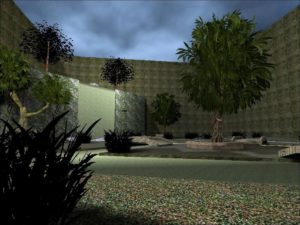 This map had a fair share of easter eggs, such as a hidden room beneath the waterfall.
This map had a fair share of easter eggs, such as a hidden room beneath the waterfall.
One of the most ambitious Jedi Outcast Maps at the time, and one that pushed my old computer to its limits. It was a faithful (as far as possible) recreation of Bespin as it was featured in Empire Strikes Back.
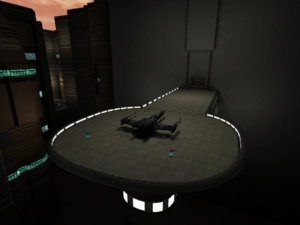
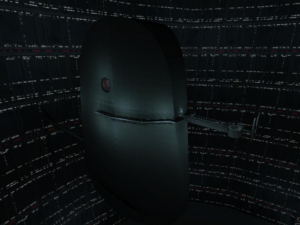
The entire map was linear, you’d start here, and end there.
One way we’d have fun in this map was that we’d flood it with laser trip mines, and turn it into a very dangerous race to the end, as every time someone died they’d respawn right at the beginning.
Ah, Country Roads, take me home. One of the silliest maps ever made but also one of the most entertaining ones, there was a surprise at the end of the maze.
This map is personally notorious as the place where I accidentally spoiled Knights of the Old Republic’s twist to a friend, I’m pretty sure he is still upset at me.
What better way to go through the Matrix Reloaded hype than a Matrix map? It offered a faithful recreation of the “Burly Brawl” field (complete with destroyable benches and all), a semi-accurate recreation of the The Merovingian’s mansion, as well as a few other original spots.
This one was a very niche map, so niche that it could only be found on lesser known websites, as a matter of fact, I cannot seem to be able to find it anymore, not even a screenshot of it.
It featured a large church with a hidden rave mode, a bell that could insta kill anyone, and a small town-like area.
Models and Skins
The most common type of customization, you could expand upon the base character roster to your heart’s desire.
You could download new models from a myriad of websites and expand your selection with characters from the Original Star Wars trilogy (Darth Vader, Palpatine, C-3PO), or characters from the Prequels (Obi-Wan, Anakin, Qui-Gon, et al.)
And if that wasn’t enough, you could grab characters from anything you can possibly think of, Halo, Gundam, Metal Gear, Devil May Cry, Diablo, Final Fantasy, hell, even Mario Bros.
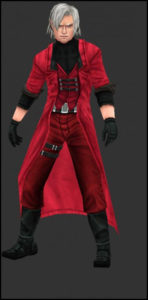
It was not uncommon for clans to do customized skins for their members, ranging from simple recolors to more elaborate reworks. I did a fair share of custom skins for my old clan mates, clad in green and black, as those were the clan’s primary colors, in addition to the red and blue themed skins for team modes. Custom clan skins gave players a sense of personality and uniqueness among their peers, adding a custom sound file for taunts made you the coolest kid in town.
The file naming structure for skins was quite strict and had to be faithfully followed, but if you did a few omissions on purpose here and there you could hide skins from showing on the character selection menu. This effectively turned them into “hidden” skins that could only be accessed via the /model console command. This was a practice I often did in many of the skins I made for my old friends, the “clan themed” green/black skin would act as the default, while the more personalized one would serve as the hidden one for their personal use.
Some models were more elaborate than others, and had “toggleable” parts, such as robes, or helmets, that you could remove via scripting. Others made use simplistic shaders (if you compare it to more recent games) to create elaborate special effects, such as being a “hologram”.
Mods
If a few new maps and characters for multiplayer wasn’t what you were looking for, you had access to singleplayer mods too. From simple changes in the campaign, to more elaborate Total Conversion mods that offered an entirely new experience.
My experience with those was limited, if not outright zero, as I never fancied much the idea of modding the single player component, all of my work was focused on the multiplayer facet of the game.
Instagib
Following the tradition of Unreal Tournament and Quake, Instagib offered a fast paced “kill or be killed” multiplayer experience.
No weapons, no saber, one shot snipers only, final destination; CTF Instagib was a blast.
Me and my friends used to occasionally hang around in “Chop Shop,” one of the most concurred and well-known instagib servers in JK2, ran by “Amidala from Chop Shop” as she was known in LucasForums, the server could easily fill during peak hours. If you’ve never played an instagib mode in a fps game, then you’re missing out, and I say this as a person that is far from good at sniping.
One of my friends who was exceptionally good at snipers, had a rival of some sorts called “American Dream”, he would drop out of anything just to compete against him in Chop Shop.
Mau'Dae's Kill Tracker
While not a mod per-se, this external add on spread like an airborne plague, even I am culprit of using it for some time.
This simple program would hook into Jedi Outcast, and relied on reading the game’s message and chat logs to track your kills, deaths, duel victories and defeats; it would also automatically type a custom message in-game for all your bragging needs.
The way it worked was also its most glaring weakness, as all you had to do was replicate any message to mess with another player’s record, the Kill Tracker couldn’t differentiate one message from another.
Its only redeeming and useful feature was that it gave you the ability to control Winamp from within the game’s chat itself, and of course, it let you display your current song, because everyone totally wanted to know that you were listening to Evanescence – Bring me to Life. Then again, another player could easily trick your tracker and force-skip songs, much to their dismay and to your amusement
It is both hilarious and sad that a “kill tracking” feature is now considered a pre-order bonus (Looking at you, Bungie.)
Hydroball
This one was spawned out of Final Fantasy X’s popularity at the time, this client-side mod tried to recreate Blitzball right into Jedi Outcast.
There were other mods, such as one that tried to turn the game into Dragon Ball Z, complete with the sound effects and all, but JAmod servers were the overwhelming majority when it came to server-side mods.
If you’re interested, Jedi Outcast’s source code was released a couple of years ago, you can grab it here.

For all that Jedi Outcast had to offer in its heyday, nothing is more treasured to me than the memories of the good times that I had the pleasure of sharing with my friends, it is what makes me cherish this game long after its glorious dawn, its radiant noon and its solemn sunset.
The Early days
Just like any newcomer, I spent the first days of my first Jedi Outcast adventures being a complete and utter noob. The first thing I did was open the character options, and named myself “Darth Kaleb” an oh-so totally original name that I had previously used for my MSN messenger address during the Attack of the Clones hypefest.
The game allowed you pick the color of your Lightsaber blade. No Sith wannabe was ever complete without its red Lightsaber, so naturally that was my first choice. With my name and saber chosen, it was time to hit the server browser and find a game. I, of course, went with Dark Side during those times, and swung my Lightsaber at enemies, but I was no match for experienced gun-wielding opponents.
The first few days went by, slowly learning from my mistakes, and improving my skill in the game, as well as slowly learning the existence of the Saber Code by force, many times was I kicked out of servers for breaking those rules, rules that I had no idea existed in the first place.
I didn’t even used WSAD to move, I used the arrow keys instead…
The Power of Thee
I continued to roam around from server to server until I landed on the Power of Thee clan server, the server was often full, there was always someone to fight against, someone to duel with; suffice to say, my English was even more broken than it is today. Communication was a hell of a barrier that I had to somehow surpass (made more difficult by the fact that I had no idea that you could press Y to quick chat).
As time went by, I started to get the hang of the game. I learned so many things; at first I thought that the higher my ping was, the better my connection, I had no idea why that person with 50 ping was berating me for “lag” when I had 999 ping, the maximum.
“I’m sure he is just jealous that I have so much ping than him.” I said.
Learning from my mistakes, I began to improve and I “got gud” at dueling (just a little though) Concepts like Death from Above and Lunge (special moves that can only be performed under specific Lightsaber stances), kicks, and using Y to quick chat instead of using the console to type were now known to me.
I started to realize that many of the players, both from the clan and outside, were regulars just like me, language limitations aside, I began to communicate with other players, grasping around the idea that these were people just like me, and not mindless bots. I enjoyed playing in [PoT]’s server and its members, so why not? Let’s join them.
The way they operated was Jedi-esque, you didn’t simply joined them, someone had to take you as their apprentice; I kept playing until Evolution noticed me, and decided to take me as his apprentice.
I had a basic foundation of how dueling worked in Jedi Outcast, he helped me sharpen it, he taught me how to be unpredictable, but most importantly, how to use the “forbidden technique” of the yellow stance.
For some inexplicably reason, I still didn’t used WSAD for movement, after fifteen years I still cannot find an explanation…
During my tenure as an apprentice in [PoT] I became friends with many of other fellow aspirants, as well as members of the clan, these are friendships that still endure, even after fifteen years have passed.
Time went by, until my initiation “trial” was at hand, two days before the appointed date however, Evolution left the clan, and I was left without a “master.” I was appointed an interim master for those ~48 hours.
It was a Monday night if memory serves me well, the night of my “trials”, passing the first half—Lightsaber duels—exonerated you of the second (a free for all deathmatch); the dueling trials consisted of six duels, all against members of the clan, emerging victorious in at least four of those was necessary to become a full-fledged Knight of [PoT].
I won all six.
Over time, some of my new friends also carried out their trials, and passed them with honors, it was during that time when I began tinkering around with the SDK, making my first attempts at skins using Paint Shop Pro. The first one I produced was a simple edgy recolor of an Anakin Skywalker skin, over the next weeks I started to take requests from my friends and fellow clan members, producing well over a dozen of these recolors of dubious quality.
With everyone satisfied, it was time to do one for me, but I couldn’t decide on a base skin to defile—I mean, modify, until I gazed upon a Dante model (the one shown earlier in this article), being the complete Dantesexual that I am, I didn’t need to think it twice, that was it.
I dropped the “Darth” prefix on my name, switched from red saber to blue, and started to embrace Light Side builds. I also, at last, switched to WSAD, binding my force abilities to nearby keys, a practice that I’ve now dialed to eleven in MMO games.
All teenage dramas aside (as those are always to be expected), our merry band of friends continued to have fun in JK2; I was eventually ascended from Knight to Master, and then to Council Person, the youngest one to have attained that rank, I was beyond honored.
A few months later, during a weekend, business was usual, until Evolution connected to the server, I had not seen him since he quit [PoT]; we shared one final duel, which I won. That was the last time I saw my mentor.
I only “trained” a single apprentice, but in his case, quality > quantity; he went on to take a leading role in the clan long after I was gone, I’m glad that I left them in good hands.
Power of Thee: The Movie
Back in Fall 2003, there was this brand new and revolutionary program called Fraps, believe it or not, it allowed you to record your gameplay, it certainly was some future shit right there!
A friend and I had this simple idea: “Let’s make some movies with it.”
We started working on a six-part script that extensively borrowed elements from the Star Wars Universe while using concepts and precepts from the “Expanded Universe.”, with certain creative liberties at hand of course.
In addition to the Star Wars themed core, the premise and setting also took elements from Jedi Outcast’s multiplayer community, such as “clans” and their respective headquarters (servers) and tried to apply them to the Star Wars Expanded Universe mythos.
The result was as complex and profound as two fifteen year old kids could produce (as in, it was pure and unfiltered cringe, but hey, at least it was better than The Last Jedi)
We stopped production halfway through, for numerous reasons, including but not limited to our departure from [PoT]
Unfortunately, due to our youth and inexperience when it came to safeguarding files and our apparent inability to properly keep backups, all of our work is now forever lost. I am pretty sure that if copies of these videos still exist then they’ve aged terribly. Jedi Outcast’s multiplayer framework wasn’t designed with storytelling in mind, in addition to the limited knowledge and software that we had at our disposal back then.
The only thing I could find was conceptual trailer video. Behold! The purest form of cringe!
Come think of it, we should’ve just learned how to use the limited cutscene tool provided in the SDK; that would’ve certainly easier than getting a bunch of teenage kids to work together…
Note: my friend might still hold a copy of these videos, if he’s successful in finding them I will post them here so you can die of cringe.
The YV clan Incident
Now this one’s special, a prime example of taking things a little too far…
It was a simple summer Sunday of 2003, I remember the hot weather and the sun’s glare on my window.
For diverse reasons, many of my friends weren’t online at the time, except for one; we were severely bored, and thus decided to kick around several servers, eventually arriving at the Yuuzhan Vong clan Sever (YV)
Because we were hot-blooded and full of ourselves, we defiantly challenged them to a 2v2 match. They accepted our proposal, and we defeated them with ease; however, they did not take our banter lightly.
A few hours later, we were hanging around on our clan server, just like every other night until someone from their clan impersonated one of our clan members (doing a poor job while at it), he was swiftly dealt with repeated kicks, and then a ban, and that should’ve been the end of that story.
But no, of course now. This “transgression” was too much for one of our leading members, and he co-opted us into retaliating. To achieve this end, he established a Joint Task Force or “JTF” for short, some sort of one hundred percent totally serious Special Forces unit.
The first stage involved gathering Intel—
>On a clan full of kids
>Some of which legit roleplayed as the Vong
>On a video game server
>On that Jedi Council map
Stage II involved infiltrating said clan, for reasons, and attaining high ranks among them, as all you had to do what beat a high ranking member to get a promotion, something that wasn’t particularly hard to achieve.
Stage III involved a “lmao, got’em” moment of some sorts, I still don’t know what was the whole point to be honest.
Looking back at it, the whole thing spawned nothing but cringe, JTF continued their shenanigans long after I left the clan in summer of 2004, with things like a “Delta Force.”
The TMBJ Match
The apex of my JK2 career, and quite possibly, that of my friends too.
We organized a clan match between [PoT] and They Might Be Jedi (TMBJ), some of the leading figures of TMBJ were behind jk2files.com (the largest repository for Jedi Outcast mods), and another of them was the author of the most beloved Country Roads 2 map.
The rules were simple: Capture the Flag, best of three, six versus six.
We practiced day and night, micromanaging every aspect of our defense and offense, our hard work paid off, we beat them 2-1. That match was the first and only time that we used the two team-exclusive abilities: Team Heal and Team Energize, our ace in the hole (support abilities like those two are now taken for granted, especially in games like Overwatch, where they make all the difference in the world)
I am glad to say that I had an overwhelmingly fantastic experience during those eighteen months that comprised the prime of my Jedi Outcast career. This game was essentially my gateway to the online world, without it I wouldn’t had been able to meet a group of fantastic individuals, and establish bonds of friendship that I hold dear even to this date.
Life has perhaps taken us down different paths, and I’ve unfortunately lost contact with most of them; I’m pretty sure we see the world through different lenses nowadays, we’ve been nurtured by different circumstances over the subsequent years, but for all the differences that we might have now, for all the good (and the bad) that happened, allow me to paraphrase the inmortal words of Obi-Wan Kenobi and say that they were good friends.
The path of my Jedi Knight story did not end with Outcast; a year after its release, Raven released a sequel: Jedi Knight: Jedi Academy, mechanically superior under the hood—externally inferior in many aspects; but its virtues and shortcomings are a story for another time…
-Kal
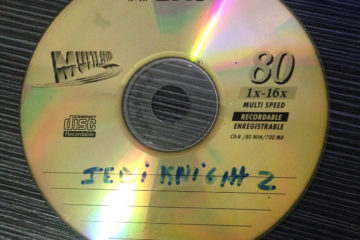
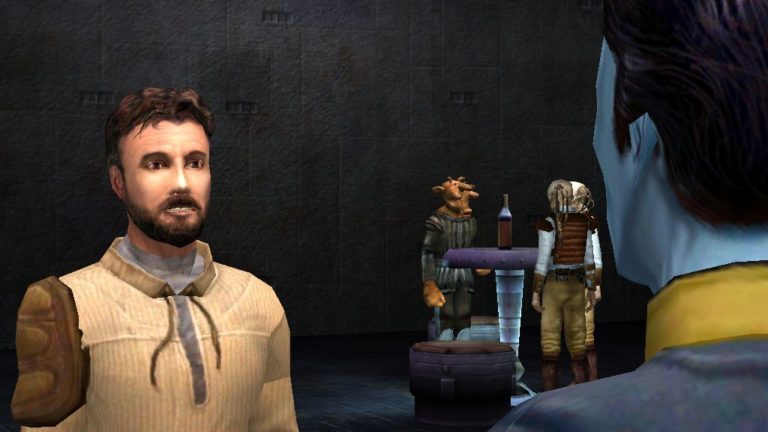
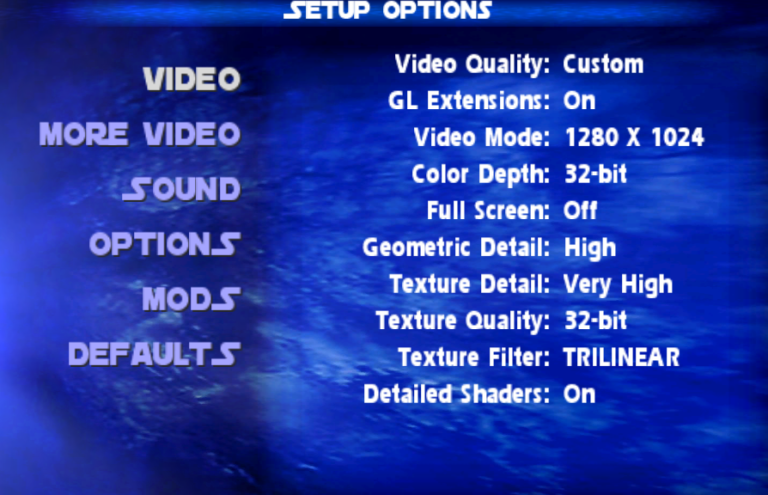
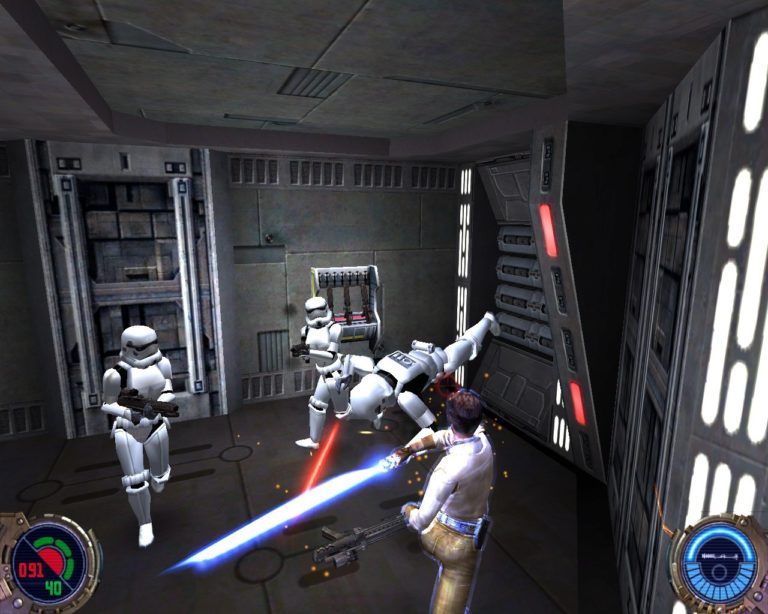
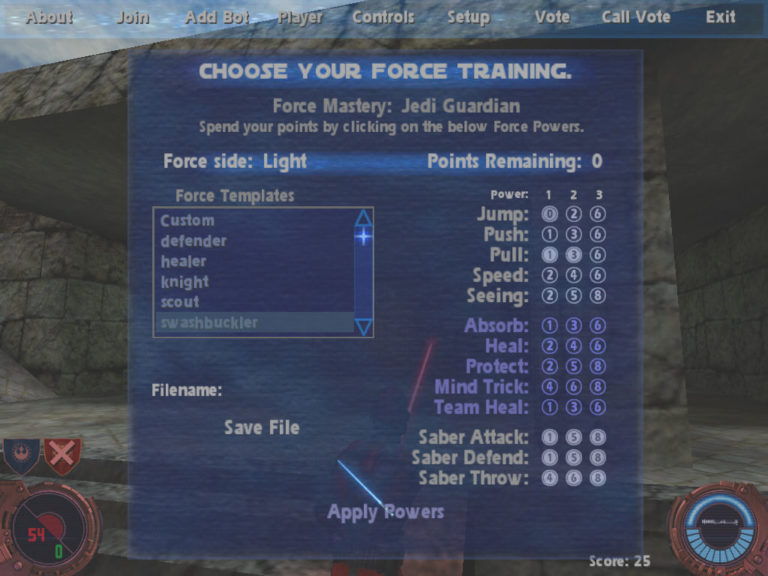
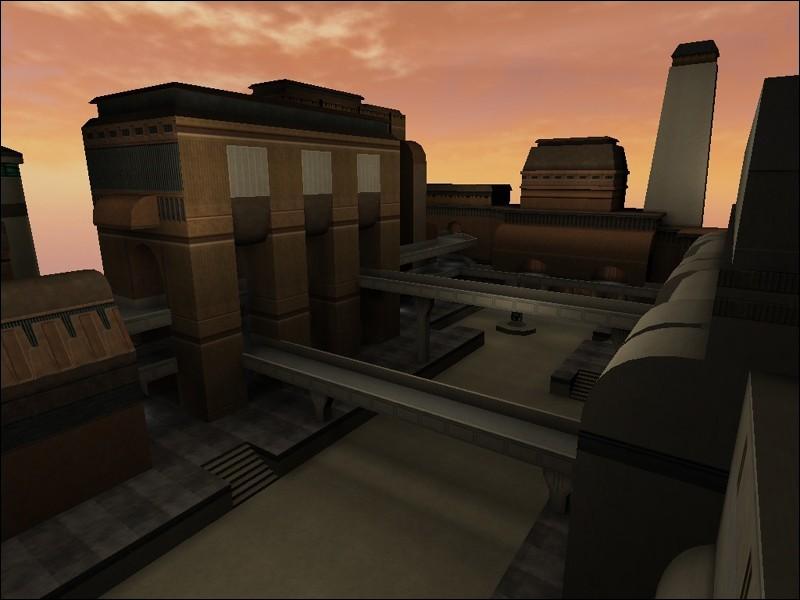
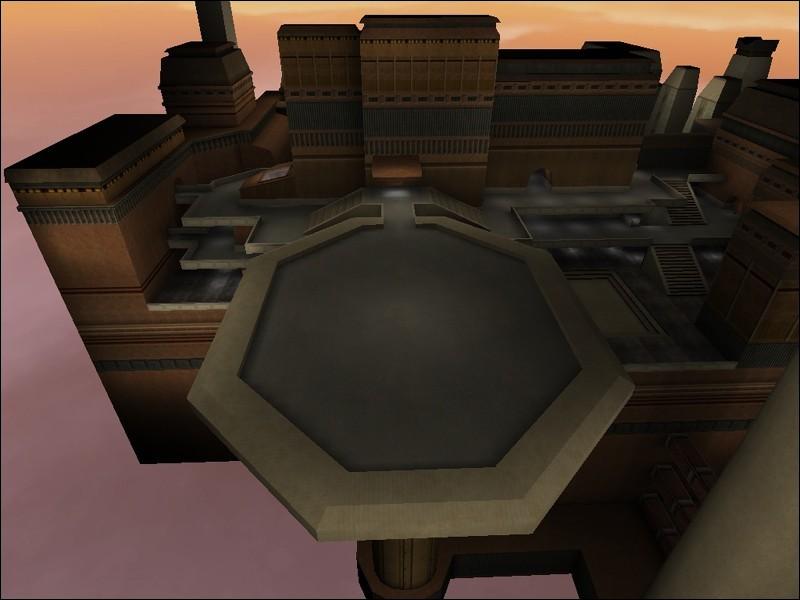
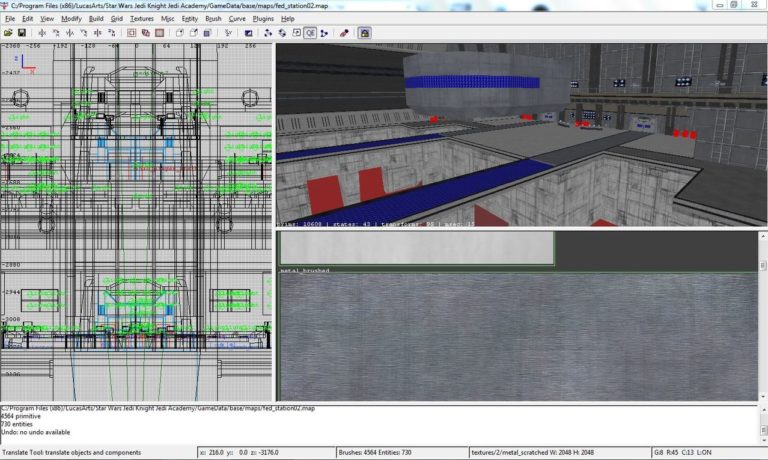
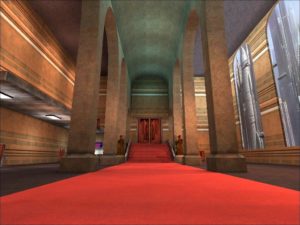
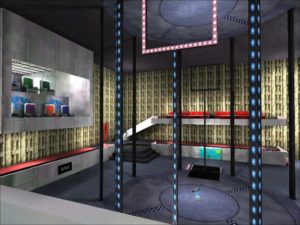
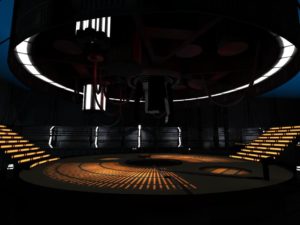
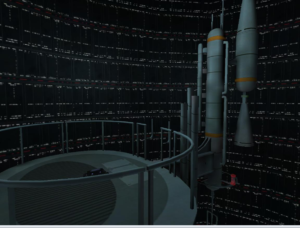
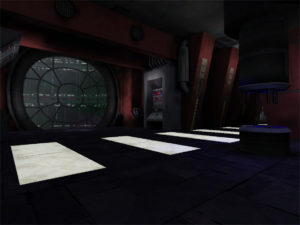
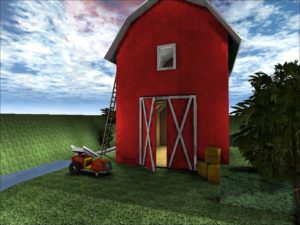
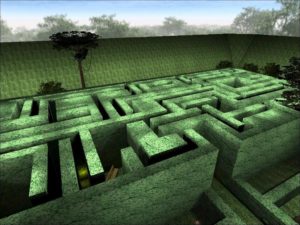
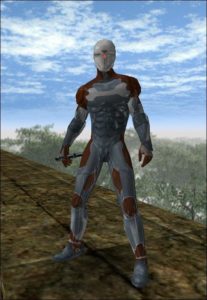


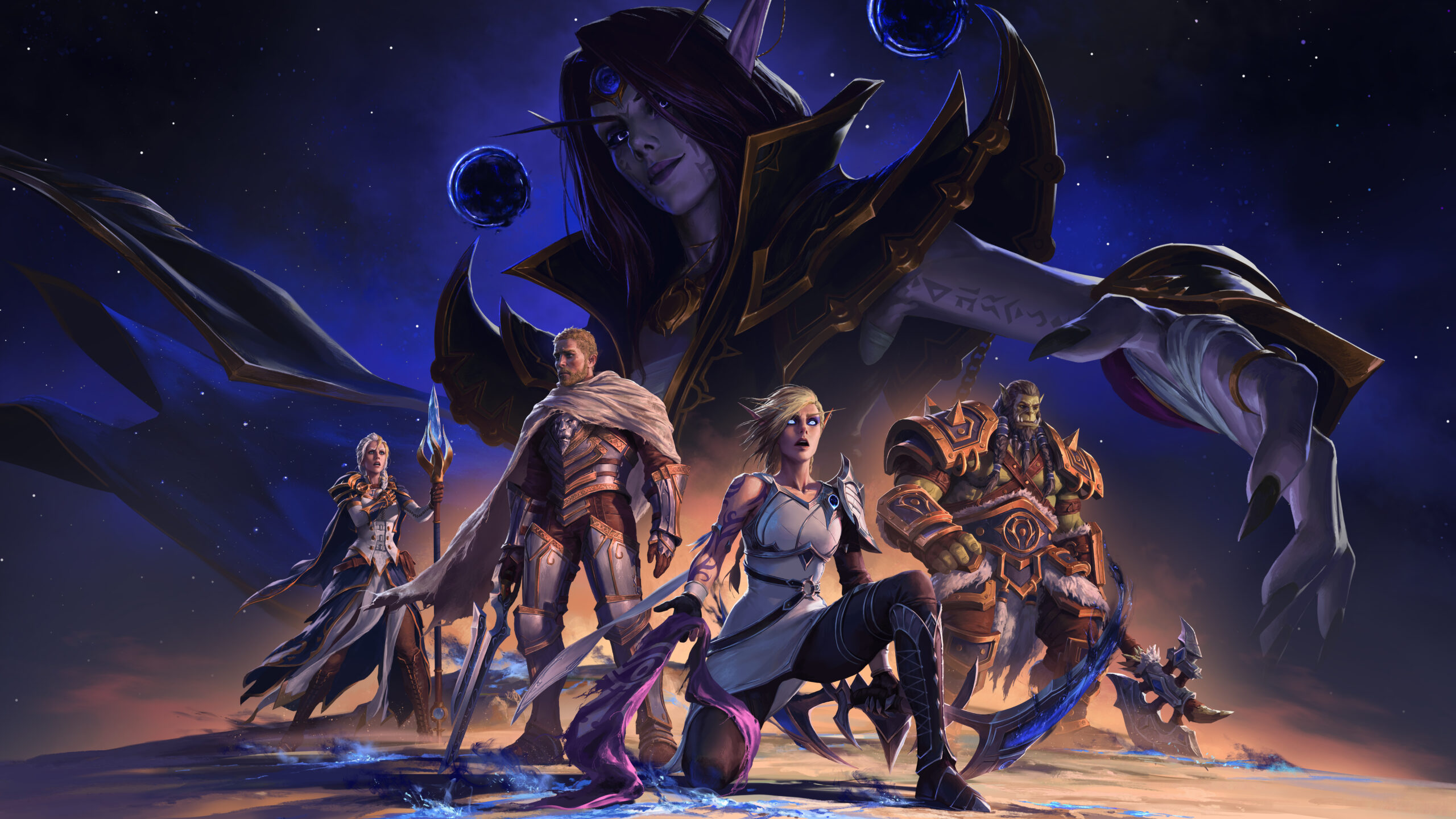

3 Comments
Vidya and me | ckaleb[dot]com · June 1, 2020 at 12:20 pm
[…] the first game that I got mods for. I kept wandering through other games until I stumbled upon Jedi Outcast’s multiplayer and then Ragnarok Online, my first big two online games which I’ve written about in […]
Final Fantasy VIII and the Rhapsody of a Kaleb | ckaleb[dot]com · June 6, 2020 at 1:56 pm
[…] impression was ever so present, even after I had started my journey into online PC gaming and Jedi Outcast, FFVIII was still there with […]
Piracy, Venezuela, and the Devil’s Advocate | ckaleb[dot]com · June 17, 2021 at 12:40 pm
[…] not been able to play as many video games in my youth. If I hadn’t obtained a pirated copy of Jedi Outcast in 2002 I would have not been able to meet people who, after nearly twenty years, are still great […]
Comments are closed.